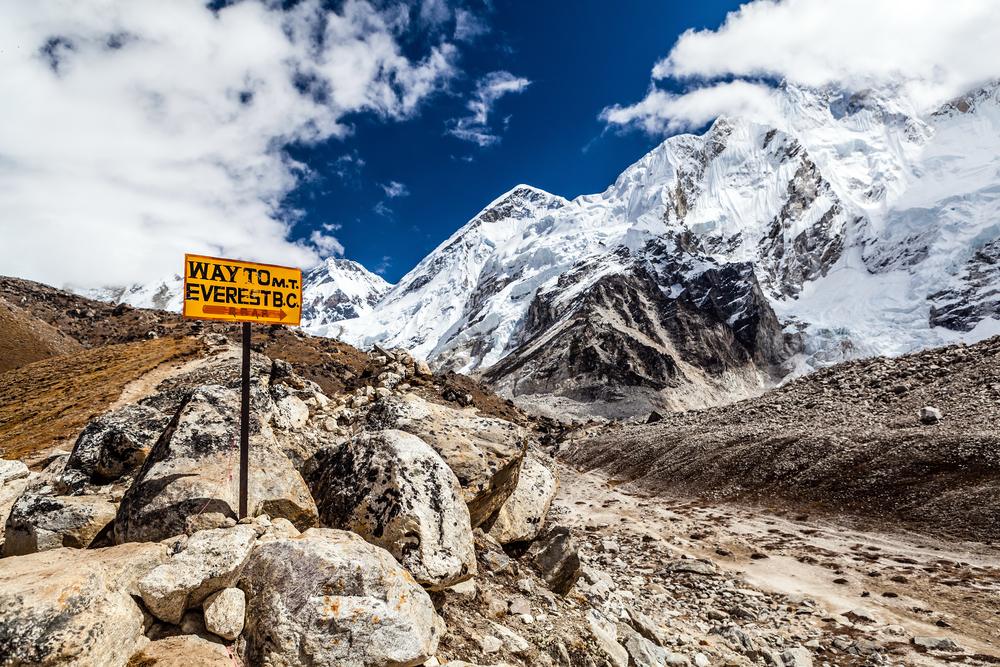Embarking on the iconic Everest Base Camp Trek is a dream for many adventure enthusiasts seeking to conquer the world’s highest peak and immerse themselves in the awe-inspiring Himalayan landscape. As the popularity of trekking to Everest Base Camp continues to rise, it is essential for trekkers to prioritize sustainable practices to minimize their environmental impact, preserve the fragile ecosystem, and support local communities along the way. Join us as we explore the importance of sustainable practices during the Everest Base Camp Trek and how trekkers can contribute to responsible tourism in the regionk.
Responsible Waste Management:
One of the key sustainable practices during the Everest Base Camp Trek is responsible waste management. Trekkers should carry a reusable water bottle and water purification tablets to minimize plastic waste. Additionally, it is crucial to pack out all non-biodegradable waste and dispose of it properly at designated waste collection points. Avoid littering and respect the natural environment by leaving no trace behind.
Support Local Communities:
Another important aspect of sustainable trekking is supporting local communities along the Everest Base Camp Trek route. Choose locally-owned teahouses and lodges for accommodation and meals to contribute directly to the livelihoods of local residents. Purchase handicrafts and souvenirs made by local artisans to support the local economy and promote cultural exchange. Respect the customs and traditions of the Sherpa people and engage in responsible tourism practices that benefit the community.
Respect Wildlife and Nature:
During the Everest Base Camp Trek, trekkers have the opportunity to witness unique flora and fauna in the Himalayan region. It is essential to respect wildlife and nature by observing animals from a distance, refraining from feeding or disturbing them, and following designated trails to minimize habitat disruption. Avoid picking flowers or plants and refrain from starting fires in the fragile alpine environment to preserve the natural beauty of the landscape.
Opt for Eco-Friendly Practices:
Incorporating eco-friendly practices into your Everest Base Camp Trek can further enhance sustainability efforts. Choose eco-friendly accommodation options that prioritize energy conservation, waste reduction, and water efficiency. Use biodegradable toiletries and eco-friendly products to minimize environmental impact. Opt for reusable and sustainable gear to reduce reliance on single-use plastics and disposable items.
Educate Yourself and Others:
Education plays a crucial role in promoting sustainable practices during the Everest Base Camp Trek. Take the time to learn about the local culture, environment, and conservation efforts in the region. Engage with local guides, porters, and community members to gain insights into their way of life and environmental challenges. Share your knowledge and experiences with fellow trekkers to raise awareness about sustainable tourism practices and inspire others to make a positive impact.
While the classic route to Everest Base Camp is a well-trodden path that offers breathtaking views and a sense of accomplishment, there are alternative trails that provide a unique and off-the-beaten-path trekking experience in the Everest region. For those seeking a different perspective and a quieter journey to the base of the world’s highest peak, exploring alternative trails can offer a sense of adventure and discovery. Join us as we delve into some of the lesser-known routes and alternative trails to Everest Base Camp that showcase the diverse landscapes, rich culture, and hidden gems of the region.
1. Gokyo Lakes Trek:
The Gokyo Lakes Trek is a stunning alternative to the classic Everest Base Camp route, offering trekkers the opportunity to explore the pristine Gokyo Valley and its turquoise glacial lakes. This trek takes you past picturesque Sherpa villages, ancient monasteries, and panoramic viewpoints, culminating in a hike to Gokyo Ri for unparalleled views of Everest, Lhotse, Makalu, and Cho Oyu. The highlight of this trek is the series of six emerald lakes that reflect the surrounding snow-capped peaks, creating a magical and serene atmosphere.
2. Three Passes Trek:
For the adventurous and experienced trekkers looking for a challenging alternative to the traditional Everest Base Camp route, the Everest Three Passes Trek is a thrilling option. This high-altitude trek takes you over three high mountain passes – Renjo La, Cho La, and Kongma La – offering a unique perspective of the Everest region from different vantage points. Along the way, you’ll traverse remote valleys, glacial moraines, and Sherpa settlements, providing a truly immersive and rewarding trekking experience.
3. Pikey Peak Trek:
The Pikey Peak Trek is a lesser-known alternative trail that offers stunning views of the Everest and Makalu ranges from the summit of Pikey Peak, known for its spectacular sunrise and sunset vistas. This trek takes you through lush rhododendron forests, terraced fields, and traditional Sherpa villages, allowing you to experience the rich cultural heritage of the region. The Pikey Peak Trek is a great choice for trekkers looking for a peaceful and authentic Himalayan experience away from the crowds.
4. Rolwaling Valley Trek:
The Rolwaling Valley Trek is a hidden gem that takes you off the beaten path and into the remote and unspoiled Rolwaling region, known for its rugged terrain, towering peaks, and pristine wilderness. This challenging trek offers a sense of seclusion and tranquility as you traverse alpine meadows, glacial valleys, and high mountain passes. The highlight of the trek is the stunning views of Gauri Shankar and Melungtse peaks, as well as the opportunity to interact with the friendly Sherpa and Tamang communities along the way.
Conclusion:
By incorporating sustainable practices into the Everest Base Camp Trek, trekkers can help protect the natural environment, support local communities, and preserve the cultural heritage of the Himalayan region for future generations to enjoy. Responsible waste management, supporting local communities, respecting wildlife and nature, opting for eco-friendly practices, and educating oneself and others are key steps towards promoting sustainable tourism in the Everest region. Together, we can ensure that the Everest Base Camp Trek remains a pristine and enchanting destination for years to come. Let’s trek responsibly and leave a positive footprint in the majestic Himalayas.
